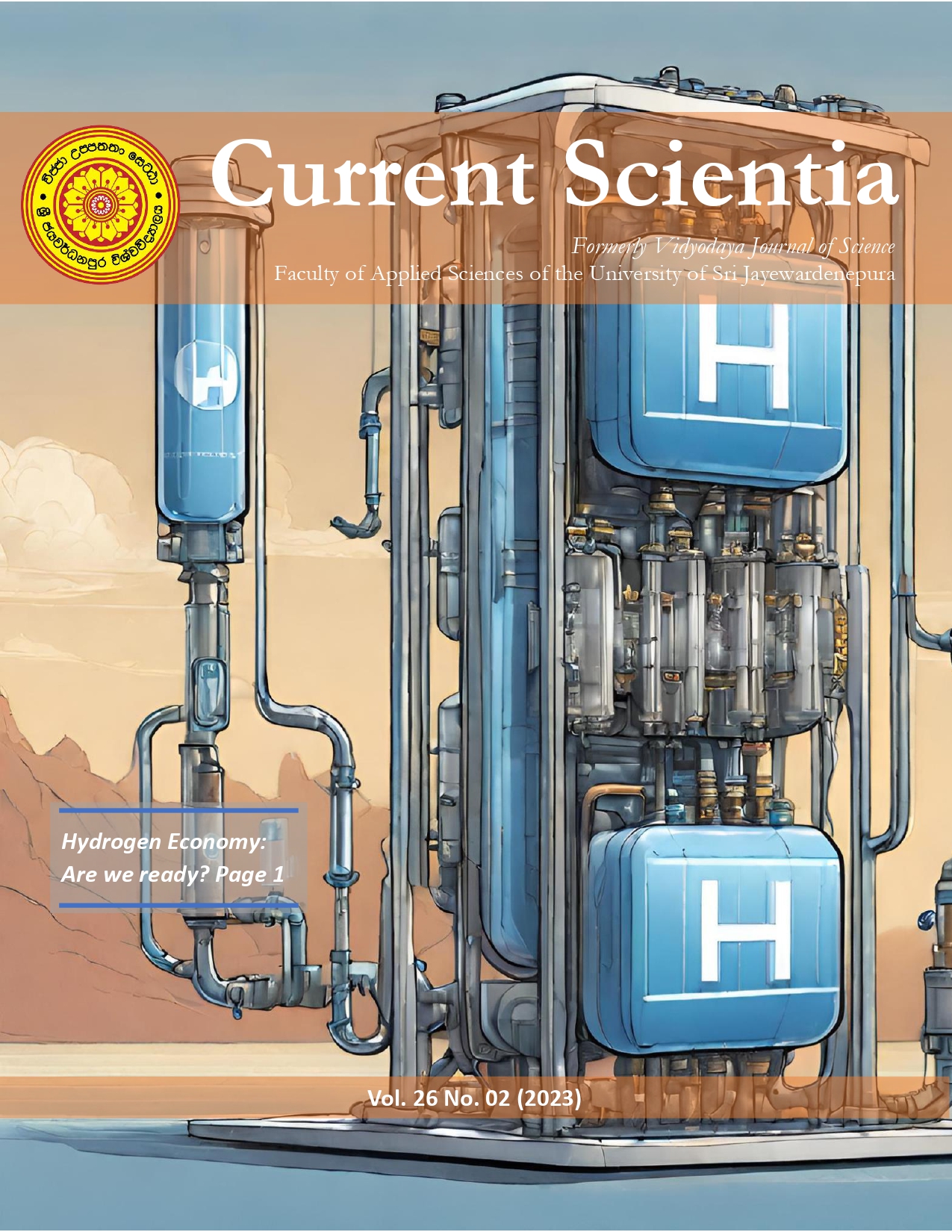Comparative Phyto and Physicochemical Parameters of the Therapeutic Plant Syzygium cumini (L.) Skeels in Jaffna District
DOI:
https://doi.org/10.31357/vjs.v26i02.6808Abstract
Syzygium cumini (L.) Skeels (Myrtaceae) is an evergreen tree, grown widely in Sri Lanka. It is regularly recognized as jambolan, black plum, and jamun. It is an extensively used therapeutic herbal in the treatment of innumerable illnesses, particularly in Diabetes mellitus in traditional medicine. The goal of the research was to compare the phytochemical and physicochemical properties between the different parts of jambolana tree which is naturally found in Sri Lanka. Proximate estimation of physicochemical properties of dried matured different parts as bark, leaves, fruits, and seeds of the Syzygium cumini have
been done in the current study rendering to the standard protocols recommended by the World Health Organization (WHO) and Association of Analytical Chemist (AOAC). This study includes electrical conductivity value, moisture content, fat content, and different ash contents analysis. It was found that the leaves had the highest electrical conductivity (16.67±1.53) and the bark had the lowest electrical conductivity (2.44±0.03). The moisture content of the bark was lower (11.30±0.44) in comparison to
that of the seeds (16.34±0.43). Furthermore, the bark had the highest fat content (1.02±0.03) and acid insoluble ash (2.65±0.89), when compared to the seeds (0.65±0.01) and leaves (1.00±0.88) respectively. The seeds had the highest pH (5.39±0.08); total ash (2.18±0.06) and water-soluble ash (5.25±0.55), while the fruits had the highest sulphated ash (1.99±0.55). Qualitative inspection revealed that hot ethanolic seed extracts contained high levels of flavonoids, tannins, phenols, glycosides, alkaloids, terpenoids and quinones, in addition to other parts, which also had high levels of alkaloid content (81.06 mg/g). The current study will contribute useful data in the precise documentation and validation of various parts of S. cumini and may aid in removing contaminants in the preparation of nutraceuticals or medicine.
Keywords: Medicinal Plant, Parts, Parameters, Physicochemical, Phytochemical, Syzygium cumini




